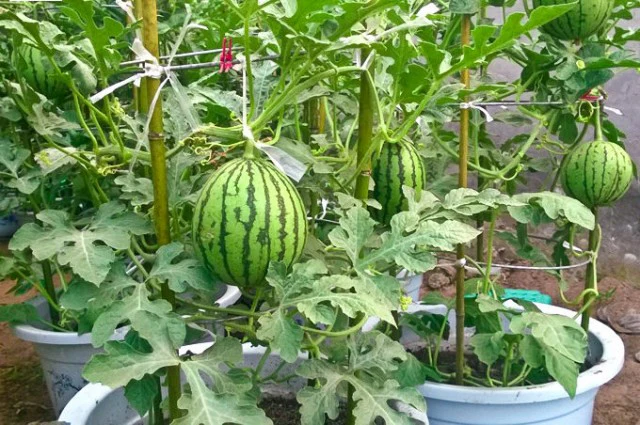Summer’s Classic Watermelons
Watermelons in the summer are truly delightful, but they certainly do consume a great deal of space. Their vines spread far and wide, and you must patiently wait—typically 80 to 100 days—before you can indulge in their luscious, sweet fruits. It is certainly a challenge of patience, but one you will find well worth it. There’s nothing quite like cutting into a large, ripe watermelon at its best. And you know what? Smaller watermelons are just as sweet and tasty!
In order to save space, you can even grow watermelons in containers and pots. This way, even though you might not have a large garden, you can still have home-grown melons. There are even watermelon varieties with shorter vines or bush growth, which are ideal for small spaces. If you include a trellis or support, the vines will grow upwards rather than spreading out. This not only conserves space but also allows air to circulate around the leaves, lessening the chance of disease.
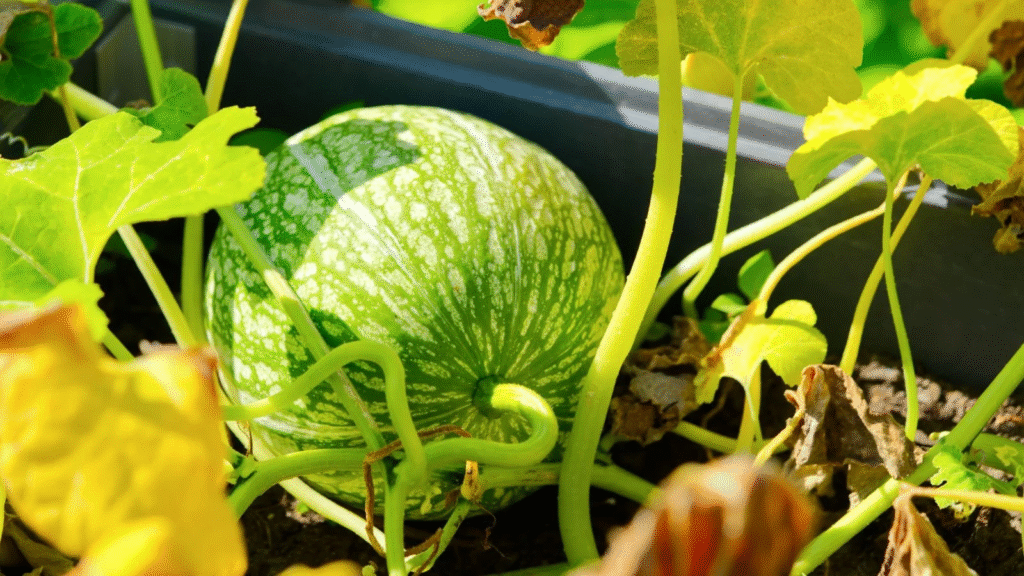
Sun and Heat Lovers
Watermelons (Citrullus lanatus) love the sun and heat. They require at least six hours of direct sunlight a day to perform their best. If the temperature remains above 70°F (21°C), they literally grow quickly. If it’s too chilly, they will do nothing but sit there.
They are members of the same plant family as cucumbers and squash (Cucurbitaceae), so they are prone to the same diseases and pests. To keep things from going wrong, avoid planting them too close to their cousins. Plant flowers or herbs around them instead that are attractive to pollinators—this promotes healthy growth and fruit production.
Watering Needs
Since watermelons in pots dry out faster than those in the ground, you’ll need to water them more often. Check the soil daily—if the top 1-2 inches feel dry, it’s time to water. To make things easier, you can set up a simple drip irrigation system with a timer. This keeps the soil evenly moist, especially helpful if you’re away for a few days.
Good Airflow is Important
Just as with humans, plants require fresh air to remain healthy. Ensure your watermelon pots have room between them and walls or other pots so the air has room to circulate freely. This prevents mold and other diseases that love damp, stagnant air.
Choosing the Right Pot & Soil
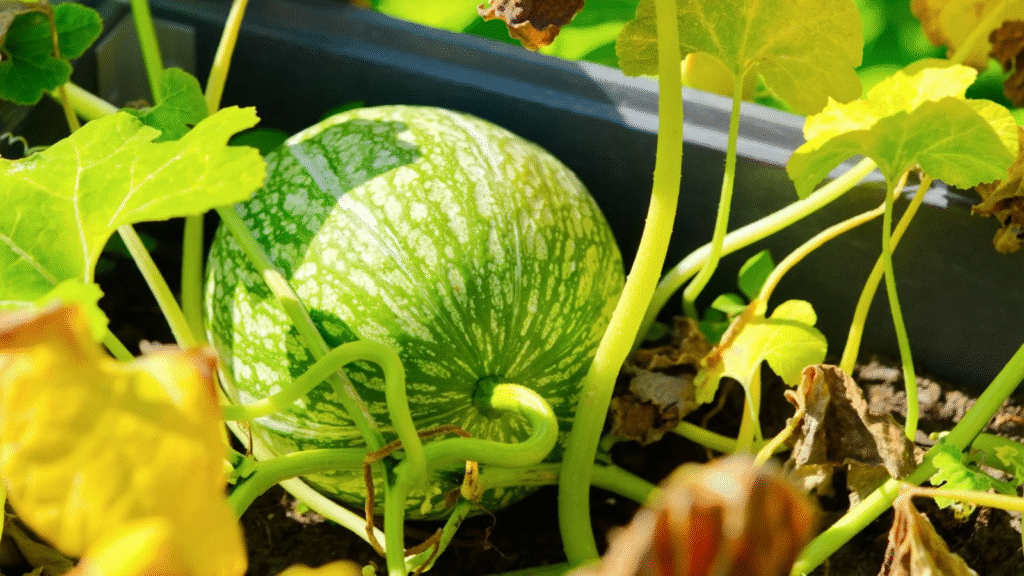
Even compact watermelon types require a lot of space for roots. The smallest pot or bucket to use is almost 5 gallons, per plant. To have more than one and/or to include companion plants, utilize a 10-gallon or larger container.
Drainage is important—ensue your pot has holes in the bottom so water doesn’t collect. Use a good potting mix that’s light and drains well. A layer of mulch at the top keeps the soil moist and at a consistent temperature, but not touching the stem to prevent rot.
Planting: Seeds or Seedlings?
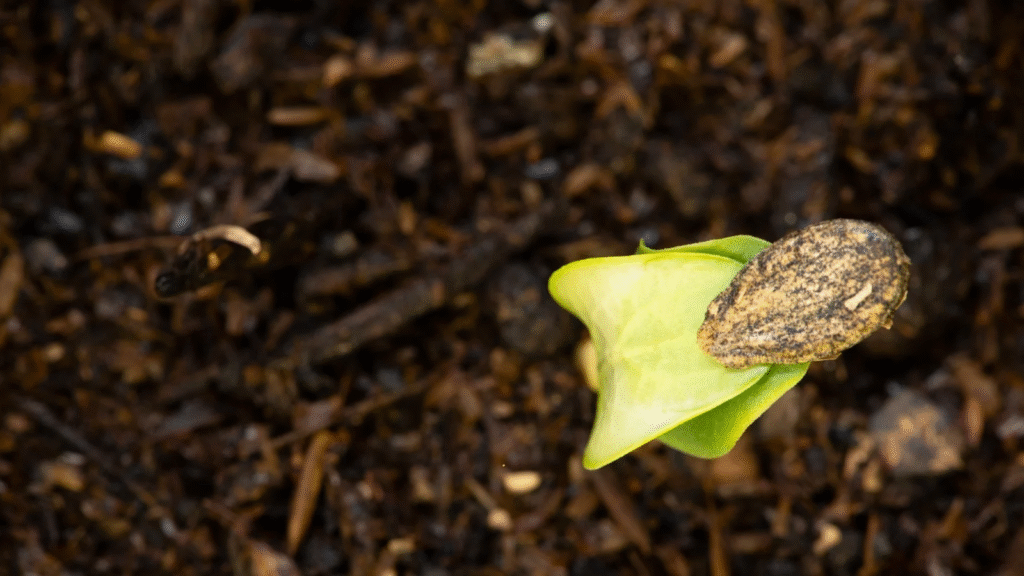
Watermelons don’t enjoy having their roots disturbed, so it’s best to plant the seeds directly in the pot. After the last frost, when the soil is warm (at least 70°F/21°C), wait for it. Cold soil will retard growth, and cold nights will actually inhibit fruiting.
Sow 2-3 seeds roughly ½ inch deep in the middle of the pot. When they germinate and develop three sets of true leaves, thin them to leave only the healthiest seedling standing. Remove the others at soil level—don’t pull them, or you’ll jeopardize the roots of the one you want to keep.
Choosing the Best Varieties for Pots
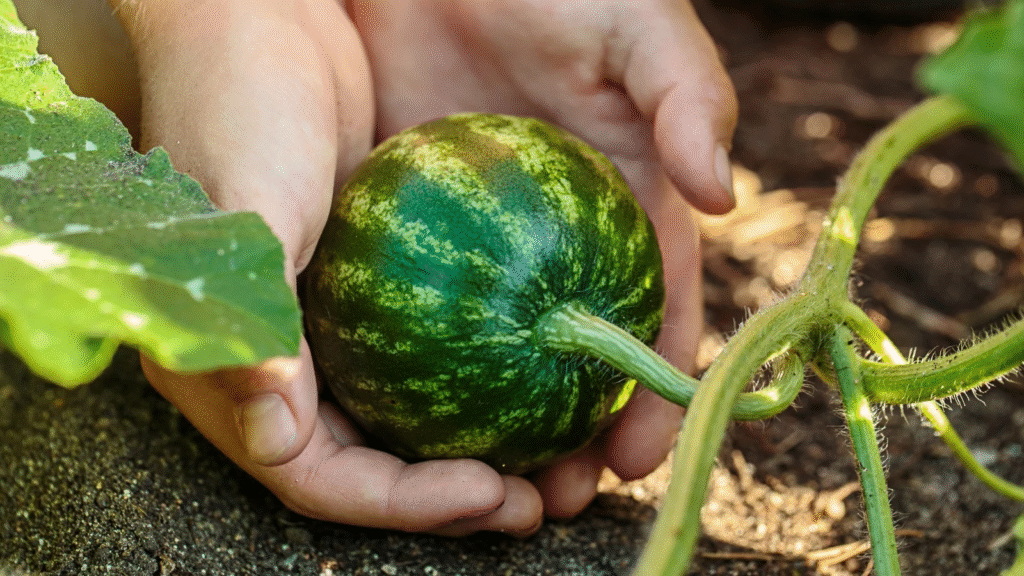
Not every watermelon is gigantic and spreading. Some excellent varieties for containers are:
Icebox melons – Smaller, perfect for a single serving.
Bush varieties – Compact, with shorter vines.
Early-maturing types – Ready to harvest sooner.
Seedless varieties – No annoying seeds to spit out!
Look for varieties that stay under 7 pounds—they’re easier to manage, especially if you’re growing them vertically. Some can even reach 12 pounds or more, but those need extra support.
Growing Up, Not Out (Vertical Growing)
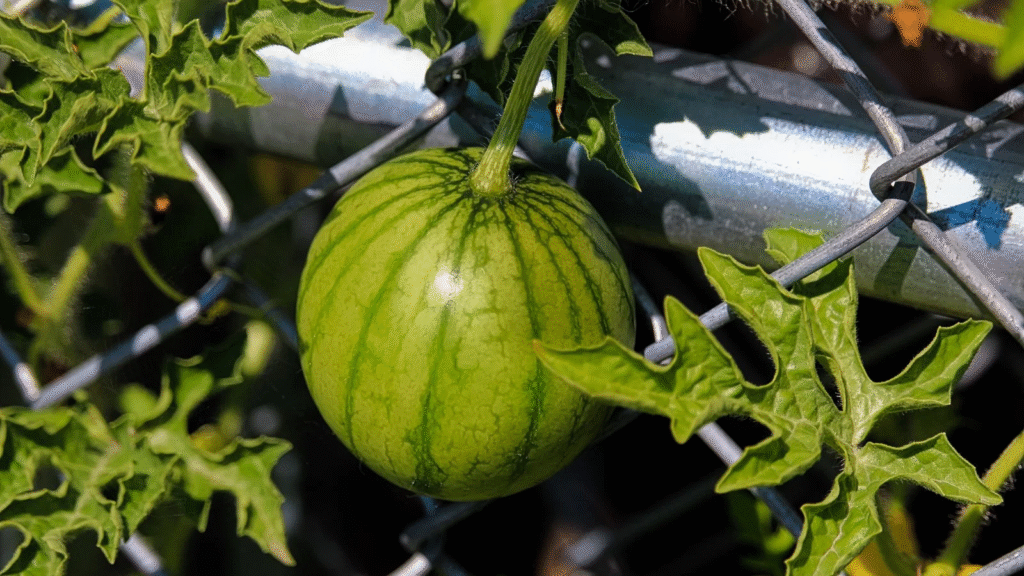
Because space is scarce, training watermelons to climb up a fence, tripod, or trellis is an intelligent decision. A tomato cage or wooden tripod is ideal. Just ensure it’s sturdy enough to support the vines and heavy fruit.
Assisting the Vines to Climb
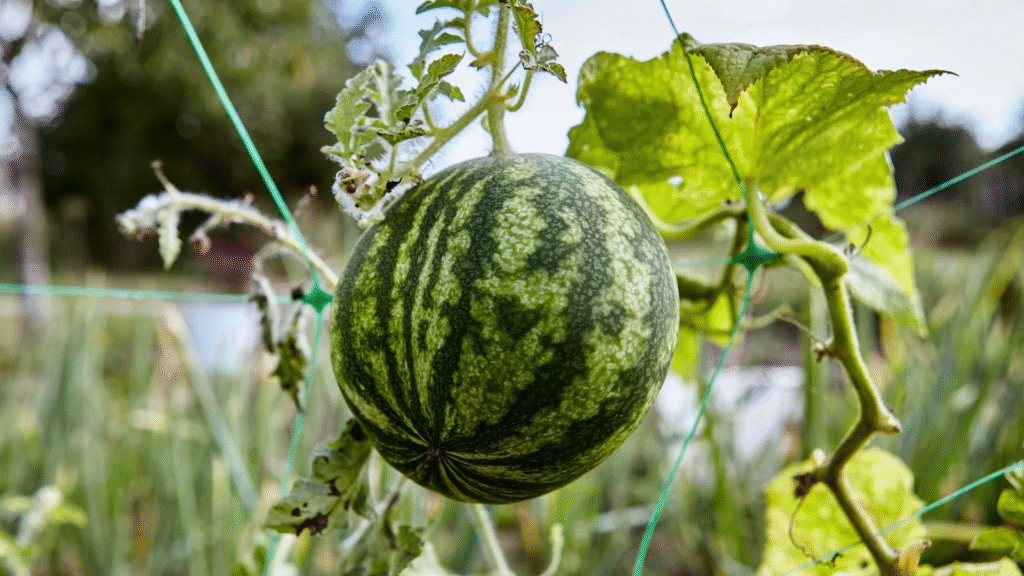
Watermelon vines have little curly tendrils that grab onto things, but they don’t climb on their own. You’ll need to gently tie the stems to the support every 4-6 inches as they grow. Use soft twine or cloth strips, and be careful not to damage flowers or tiny fruits.
Supporting the Heavy Fruits
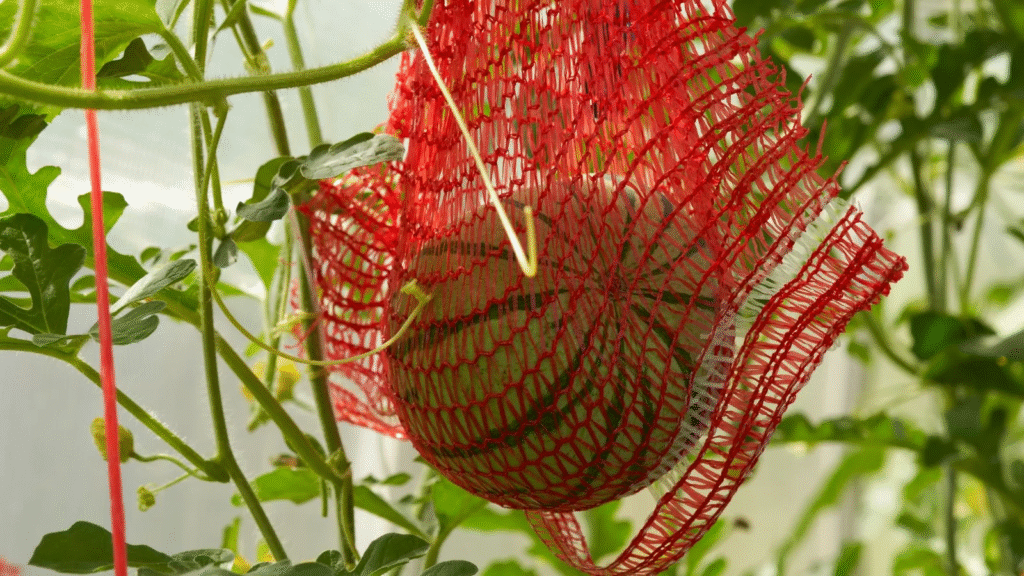
After the melons begin to form, they will become too heavy for the vines to support. When they are roughly the size of a baseball, support them in a sling from:
Strips of old t-shirt
Onion bags
Pantyhose
Mesh produce bags
Secure the sling to the trellis so that the melon will not break off the vine.
Watering & Feeding for Best Flavor
Watermelons are thirsty plants—1-2 inches of water per week. But when they are near being ripe, reduce water. Too much then causes the rinds to crack or reduces the sweetness of the flavor.
For fertilizer:
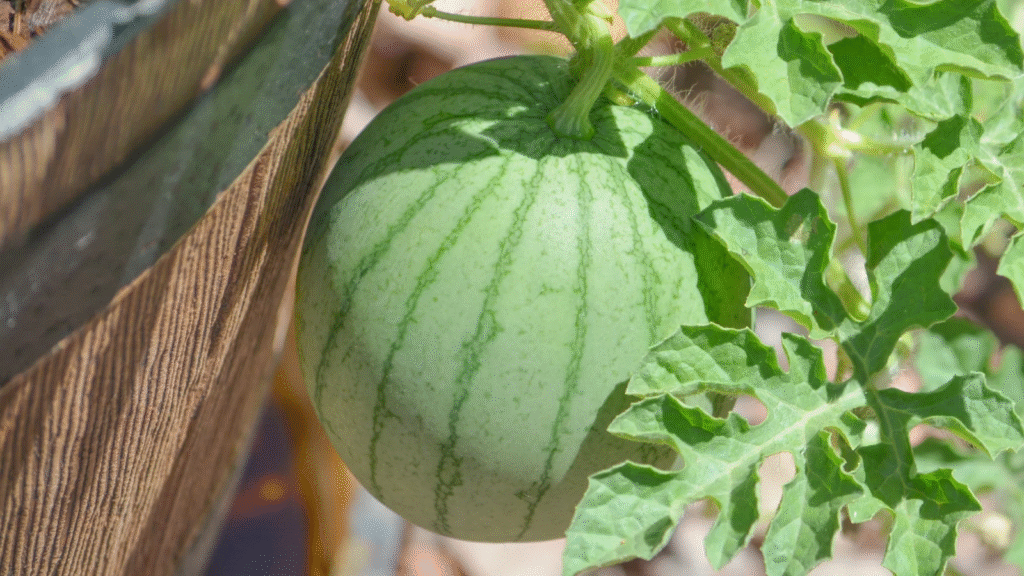
At planting time, a balanced organic mix.
When flowers form, change to a higher phosphorus one (fruiting).
Avoid excessive nitrogen later on—it creates leaves, not melons!
Pests & Problems to Watch For
As with any plant, watermelons can encounter difficulties:Cucumber beetles, squash bugs, vine borers – These insects adore cucurbits.
Fungal diseases (mildew, fusarium wilt) – Proper air circulation keeps these at bay. Growing them vertically allows for earlier detection of problems.
How to Know When They’re Ripe
Unlike certain fruits, watermelons will not ripen further once picked, so timing is critical. Look for:
Dull, matte skin (shiny = not yet ripe).A dried, brown tendril close to the point where the melon is attached to the vine.
A hollow “thump” if you hit it, deep (a high-pitched noise indicates it’s not ripe).
Best Container Varieties
Some of the best for containers:
‘Sugar Baby’

80 days to maturity
6-10 lb melons, dark green rind, extremely sweet red flesh
Compact vines, ideal for limited space ‘Sugar Baby’ lets those of us who don’t have the garden capacity for the big classic oblongs to grow equally deciduous watermelons. This classically sweet, juicy watermelon is a smaller, more compact variety. The melons weigh in at six to ten pounds and have firm, mottled black-green skin.
‘Sugar Baby’ is an improved dwarf variety with rich red flesh. It’s made to fit in the icebox for cool refreshment on those end-of-summer days.
Harvest ‘Sugar Baby’ in about 80 days. Warm climates may be able to get in two rounds of sowing for a mid- and late-season yield.
‘Golden Midget’

70 days to maturity
3 lb melons, yellow rind, pink flesh with a pineapple flavor
Excellent for short seasons ‘Golden Midget’ brings high visual interest to the vine and on the plate. With pale yellow skin that’s smooth and shiny and salmon-pink flesh, the petite globes are showy. They’re also juicy and mildly sweet with hints of pineapple.
The small melons weigh three pounds and are early to mature, ready to harvest in about 70 days. The productive, compact variety from the University of New Hampshire in 1959 is viable not only for pots but also in climates with short growing seasons.
‘Mini Love’
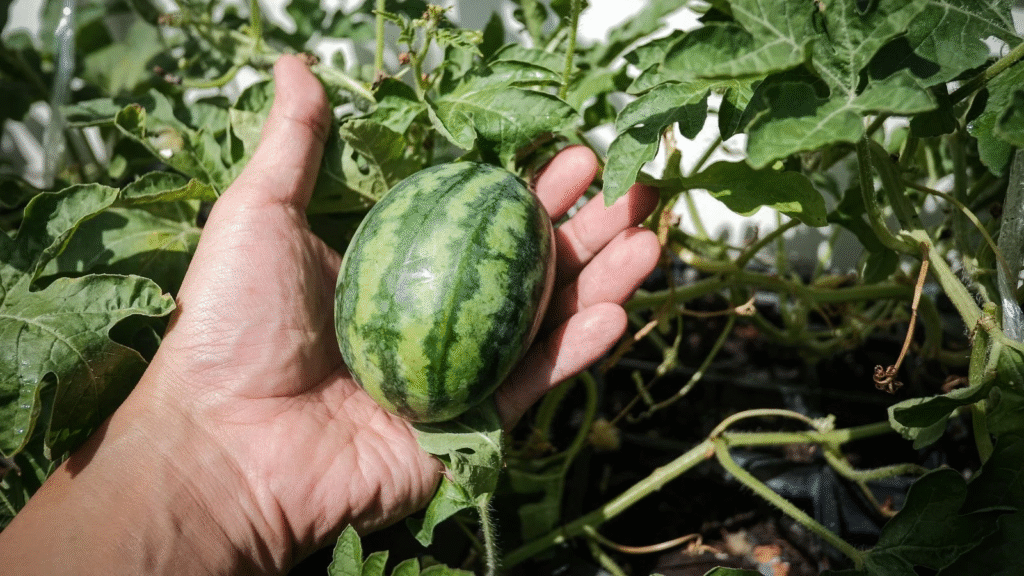
Short, award-winning vines
5-7 lb melons, resistant to cracking, very few seeds
Super sweet, bright red flesh ‘Mini Love’ is an All-America Selections Award Winner for good reasons. Its short vines allow for accessible growing across garden scales. Productive at up to six fruits per plant, ‘Mini Love’ watermelons are crack and split-resistant. The rind is firm but thin for a full, fleshy interior that’s juicy and crisp. A high sugar content yields sweet rewards from bright red flesh.

